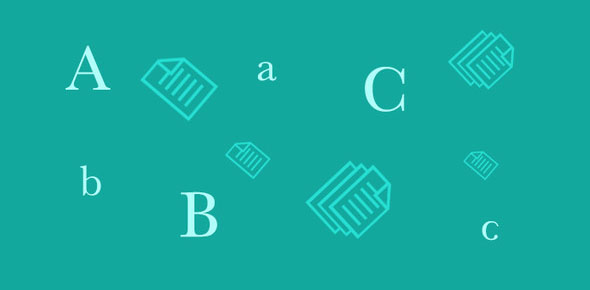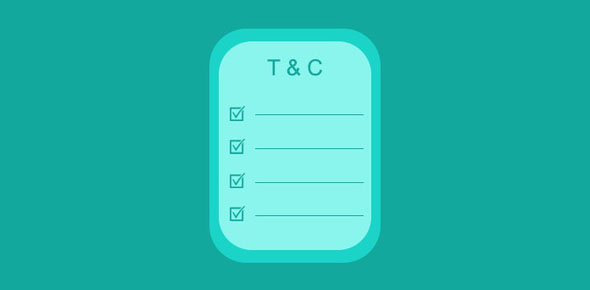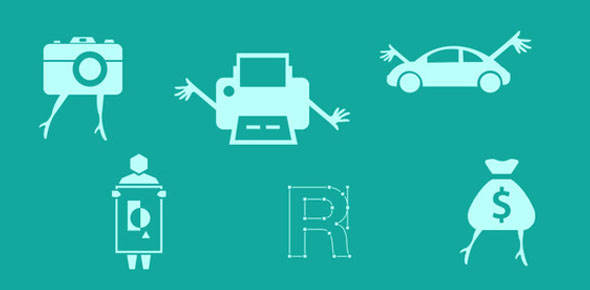What is the first thing that comes to mind when you happen to see a visually appealing website? “Oh it is so beautifully designed!” The credit, however, would go to those who actually craft such masterpieces. In common parlance, we call them the “DESIGNERS”! We, humans, are predominantly responsive to visual representations. Just by looking at a logo, we can easily name its associated brand.
Designing is a universal language which does not need translations and puts your point right across the table. Designing plays a vital role in making your brand stand out in the crowd. Take for example the designs from ‘Apple’ which never seems to run out of fresh ideas. Their outstanding designs have revolutionized the world of creativity. So its not just important to make things look prettier but it is necessary to make the design actually work for your business.
Your designs are awesome and it works wonders for your client; what next? Do you remember when did your client dispatch the last payment? How much did you charge him for the second revision to the design?
Can’t recall? Then its time to sharpen your billing skills as well! In large scale businesses, accounting comes along as an individual entity. But when it comes to freelancing, billing becomes just another task. Mix up your expense and you have had it! This goes for the biggies as well. Keeping track of incomes and expenses comes to your aid during tough times. No worries! Invoicing is not a herculean task; with proper guidance you can skillfully crack the ‘Da-Vinci’ code of billing.
Here is your guide to the world of online invoicing. Dip in and out of the sections of your interest and make your invoicing experience even more enjoyable.
Let us begin by finding out who designers are and what they do!
Who are designers? What do they do?
We know the macro level definition let’s go a bit deeper to know how designers are categorized based on their area of work.
 Web designers: The general services offered by a web designer are planning concepts for developing a website, creating a layout, imaging, photography, copywriting, proofing, deciding font, color and background, web graphic design, user-interface designing, authoring, integrating uniform code, grid based designing, logo design, motion graphic design.
Web designers: The general services offered by a web designer are planning concepts for developing a website, creating a layout, imaging, photography, copywriting, proofing, deciding font, color and background, web graphic design, user-interface designing, authoring, integrating uniform code, grid based designing, logo design, motion graphic design.
Graphic designers: The main task of a graphic designer is to combine images, text, typography or motion graphics together to develop a design for advertisements, brochures, illustration, book design, page layout, web design, web comic, branding.
Product designers: A product designer brings together art, science and technology to develop a new product for business. It has recently become a broader term that comprise of service, software and physical design of the product.
Toiling day and night? Get paid right!
All work and less money will end your business journey. Like every business even designing aims to make hard cash. If you strike the right chord, then surely this is a profitable business. Designers can be widely categorized as web designers, graphic designers, product designers, print designers and branding experts. As a designer you should know how much to charge, on what criteria to charge and other basic invoicing concepts.
So how do the designers actually go about the whole ‘billing’ thing? Let’s take a look!
A Web Designer’s take!
Web designing is similar to putting on your make-up. Make-ups are said to enhance the beauty of a person, web designing improves the look and feel of the website.Right from placing the buttons, images, links to integrating multimedia features like sound, video and animation, a web-designer has to plunge into depths of analysis.
If you are associated with a company on full time basis then your billing needs are taken care of. You will be charged either on monthly or fixed hourly basis. But if you are a freelancer then you have to figure out what best suits you. Normally designers charge on two grounds; hourly basis or project basis. Web designers are more inclined towards part payments and prefer getting paid in installments.
A Graphic Designer’s take!
Graphic designing is an art or technique of amalgamating images and text. Graphic designers come up with out-of-the-box concepts to create and merge text, pictures and symbols and present a visual representation of their creativity. They may also use typography, visual art and page layout together to develop the final product.
There are various ways of billing for graphic designers. At the initial stages, you can go for flat or hourly rates or combination of both. Hourly rates are the safest option. Even flat rate is beneficial for web designers. If it’s a big project, you can charge as per the project completion stages. It is better to work on down-payment. Rush fees can be charged for the projects that has to be delivered quickly or before the deadline.
A Product Designer’s take!
The main aim of a designer is to bring life to their imagination. As a product designer you can give shape to your thoughts by creating innovative products that will help boost sales. It means developing a new product or revamping the existing product with effective ideas. Commercial and industrial manufacturers, car manufacturers, large-scale corporations, domestic product manufacturers, retailers, model making, design consultancies are the general sectors where product designers work.
Bill can be generated, once when the project is completed or during the various stages of product designing. Time-based billing is suitable for these innovators.
The ABC of invoice
Invoicing can be a nightmare for designers. These creative minds have to think from the business point of view too, for smooth cash flow.
Here are types of invoices that a designer should be acquainted with:
 Normal invoice: Normal invoice is a simple bill with standard invoicing terms and details like invoice number, company’s name, address, phone number, client’s name, address, product/project cost, total cost and other such basic information.
Normal invoice: Normal invoice is a simple bill with standard invoicing terms and details like invoice number, company’s name, address, phone number, client’s name, address, product/project cost, total cost and other such basic information.
Recurring invoice: This kind of invoicing is normally suited for industries where the invoices have to be sent on regular basis. Normally these invoices have fixed rates.
Pending Invoice: Pending invoice is basically the balance amount that is carried forward to next invoice payment which can also be called as outstanding. For example when a client gets an invoice of say Rs. 10,000 and if he makes partial payment of Rs. 4,000 this time then next time he will be sent invoice of the pending amount that is of Rs. 6,000 and the same process will continue till the full payment is made. This is one of the best features of billing software as we are easily able to track the pending amount.
Value-based billing: Value- based billing is charging according to the amount of work provided to the client. It is purely based on the value of work provided, unconditional to the amount of time spend. The drawback of this type of invoicing is that the designer sometime will not be able to judge the true value of creative effort spent on the project, beforehand.
Fixed-bid billing: This billing technique is suitable for small businesses or freelancers. In fix-bid billing method, the designer can quote a fixed amount for the project or the product delivered. The designers can quote the price depending upon the client’s status. It may be a bit unprofitable method but when a small business gets contract from any big company, then they can easily load their pockets.
Time-based billing: A designer may sometimes take 1 hour to design a logo and sometime may even take 3 to 4 days for logo designing. Do you think that it’s worth charging same amount for both the type of logos? The answer is certainly no; in such scenarios time-based billing is best option. If you are able to evaluate the correct hourly rate, you can mint money for each minute. The key rule of pricing is that you should by no means undercharge; hence with time-based billing you are able to incur the actual value of the project. For creative jobs like designing where you are uncertain about how much time a project will take, time-based billing tops the chart!
Creating customized invoices – Here’s how!
A bill should be presented in such a way that the clients should think that they are paying right and business should feel they are getting paid right. Invoicing software helps to create detailed and customized bills. Apart from basic details about your company and client, a billing software will allow to add features like invoice number, payment mode, services offered and their charges, payment type (part payment or full), due date, late fees (if any), thank you note and other such essential points.
Putting down T & C’s!
Like every other service, even billing software and designers have their standard terms and conditions:
 For the invoicing software:
For the invoicing software:
- Providing complete, current and accurate information about your company while registering with online invoicing services is mandatory
- Maintain the security of your password and API key
- Maintain and update the registration information or any other details provided by the billing software
- Fees, charges and taxes related to the use of services will be mentioned on the website
For designers:
- Freelancers or small companies may ask to pay the upfront before starting the project
- Charges for revision of work
- Charges for the dispatch of the project.
- Charges for product management and project management
- To avoid problems in future like misunderstandings, late payments etc., create a contract with the client which includes all terms of services
- Make sure you have the true and complete data of the clients before initiating business with them
- Designers may include their payment term like partial payment or full payment on project completion etc.
- Travelling expenses, if any (most of the time its free)
- Mostly errors like technical or typographical are corrected free of charge
- Designers do not undertake modification to the specification of the work that would increase the cost of the project without prior consent from the client
Expenses a designer should book!
As a designer, you need to book some standard expenses beforehand that will help you prepare the invoice efficiently:
 Following are the standard expenses that have to be booked by the designer:
Following are the standard expenses that have to be booked by the designer:
- Book expenses for paid images of photography that have all rights reserved
- For creating, modifying or developing designs, licensed software like Photoshop, CAD etc. will be required
- Internet usage charges
- Expenses for designing icons and buttons for the website
- Expenses for shutter stock images
- Telephone call and conference charges
- Expenses for fonts
- Mileage charges
- Expenses for special delivery and courier services
- Printing cost
- Copy services
- Domain registration and hosting expenses
Billbooks to the rescue!
 Though the world of web is crammed with countless billing software, Billbooks stands apart for its unique features. Take a look!
Though the world of web is crammed with countless billing software, Billbooks stands apart for its unique features. Take a look!
- Extremely user-friendly and convenient
- Get first 3 invoices for free
- Send estimates for free within seconds
- Create duplicate estimates, track overdue invoices and expenses with an efficient tracking system
- Keep track of paid, unpaid, closed and pending invoices with the help of billing manager
- Add a personal touch to invoices by integrating your company’s logo, email address, thank you note etc.
- Automatic calculation of dues in case of pending invoices
- Helps in sending reminders to the client
- Payments can be made by using PayPal and other reliable modes
- Billbooks creates an accurate profit and loss report
- Maintain hourly time invoicing with flat fee and recurring billing
- Save and send invoices as PDFs
Happy Billing!
Billbookers speak:
 “I am a self-employed web and print designer from California. I recently migrated to Billbooks after using Freshbooks for 4 years, and I have had a wonderful experience with Billbooks so far. Their pricing suits my budget and they offer all the features I need.”
“I am a self-employed web and print designer from California. I recently migrated to Billbooks after using Freshbooks for 4 years, and I have had a wonderful experience with Billbooks so far. Their pricing suits my budget and they offer all the features I need.”
